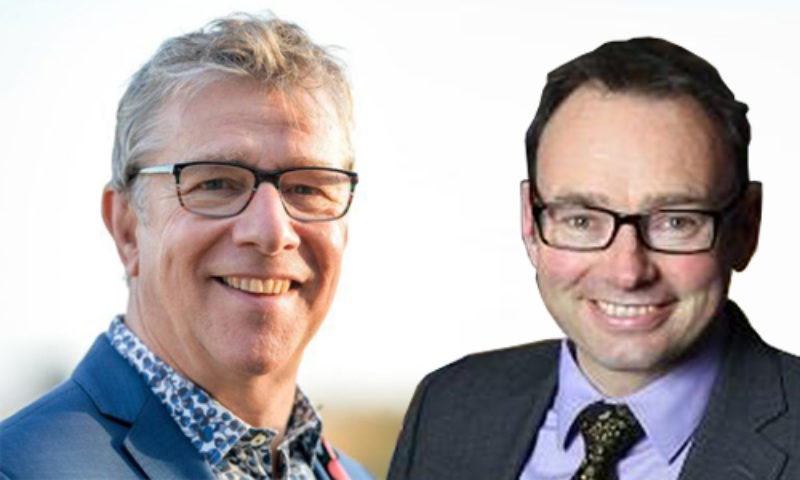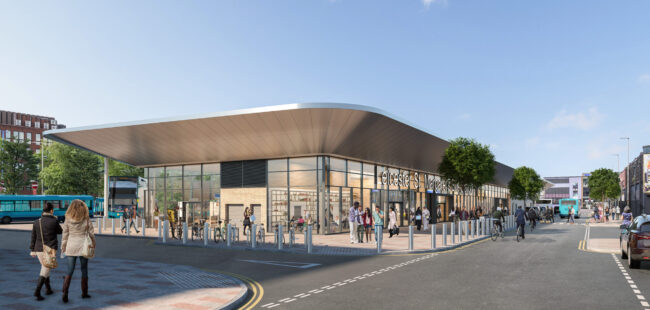The push towards investment in green, low carbon or zero emissions technology and infrastructure is of vital importance. At a recent LLEP Board meeting, the LLEP Board of Directors committed to supporting the Climate and Nature Emergency Declarations made locally and nationally. We must harness our innovation and creativity if we are to meet the national goal of net-zero emissions by 2030, and help turn the tide of a climate emergency that poses a major threat to our planet and way of life.
But it’s not all doom and gloom! If we are to be successful in driving investment in green solutions, we should also recognise that a green revolution has the potential to create enormous economic opportunities. As the body tasked with driving investment in the economy of Leicester and Leicestershire, the LLEP has appointed two of its Board Directors ‘Low Carbon Champions,’ to amplify this message to businesses and economic stakeholders across our region.
As well as being LLEP Board Directors, Neil McGhee is owner and Director of Sempervox, a Leicester-based Technology SME, whilst Chas Bishop is Chief Executive of the National Space Centre.
Chas: If it wasn’t for the Covid-19 pandemic, climate change would be top of the news agenda. It is a huge existential threat that is becoming more and more real with each passing year. This year’s UN Climate Change Conference in Glasgow is set to be one of the largest-ever gatherings of world leaders, and is part of the series of meetings that gave us the Paris Agreement on Climate Change in 2015.
It might all seem huge and impossible to tackle on a local level, but there are things we can do right here in Leicester and Leicestershire to get to grips with the climate emergency.
In fact, our region has a serious contribution to make on the world stage, owing to world-leading expertise in several pertinent areas. Leicester hosts the National Centre for Earth Observation that will move to Space Park Leicester when it opens in summer 2021. Dock is home to EarthSense, a company that monitors pollution levels street-by-street for clients worldwide. And of course, MIRA Technology Park – one of the LLEP’s two Enterprise Zones – is a world leader in the automotive industry, home to major research into electric vehicles (EVs) and soon home to a ‘gigafactory’ producing advanced batteries for EVs.
Neil: It’s therefore a huge positive that there are many individuals that live and work in our area who are passionate about improving the climate picture. There are also a great number of council-led initiatives underway to reduce the local effect of the climate emergency.
It is true, though, that we have yet to understand the full picture of what is happening across Leicestershire. There needs to be a single voice for the region that can be used to attract attention from central government. This is vital if we are to make these critical changes to our use of energy without badly impacting our way of life.
The creation of a common voice for Leicestershire can then be added to those from other areas in the Midlands. Eleven million people with a similar set of ideas makes it easier for central government to hear.
Chas: Leicester and Leicestershire as a region can make a significant impact. At the LLEP, our mantra of “healthy people, healthy planet” absolutely applies to the climate emergency. We want to use our influence to encourage private enterprise to make the changes necessary to get down to net-zero.
Neil: Chas and I have set in motion the gathering of as much information as can be found from across the city and county, which we will share with all interested parties. We have already attended several discussions initiated by The Midlands Engine to register the LLEP’s keenness to be part of the solution.
Whilst we know the first three positive actions we can all take are: use less; use less; use less; we want to do what we can to help people and businesses find new ways to become more effective in their use of energy. Early thinking suggests that low carbon, and matters related to the health of the planet, can be broken down into three distinct agenda items:
- Impact: how do we measure our impact on the planet? How do we measure pollutant levels in our streets and towns, and monitor change over time and by activity? What contribution do we make globally?
- Influence: how do we encourage businesses to behave responsibly? How can we put climate at the top of everyone’s list of priorities?
- Industry: how do we support the burgeoning Low Carbon sector? How do we give start-ups the best possible chance to flourish, and incentivise proactivity amongst employers and employees?
Chas: At the National Space Centre, we calculated in 2019 that the Centre produced 427 tonnes of CO2 every year. To offset this, we would have to plant 17,000 trees in the same period. This clearly isn’t feasible, so a major goal must be the reduction of our carbon footprint. Covering the roof in solar panels was a start, and lockdown led to a significant reduction in the amount of waste sent to landfill. 2020 was an anomalous year, but the same calculation showed a footprint of 186 tonnes of CO2. The goal will be to make significant reductions from the 2019 level once fully operational again.
This kind of action can be taken by businesses in all industrial sectors. Each small step taken by individuals or companies contributes to the larger picture, and shows that we as a region are serious about climate action. There is support available to make investments in low carbon infrastructure, many of which (e.g. switching to low-carbon energy suppliers such as Octopus or Bulb ) could help businesses make significant savings in the long run.
Neil: The LLEP is all about economic growth, but there’s no reason that this can’t be green. We want to support more of these green growth funds to help companies upgrade their low carbon infrastructure, and find new ways of developing energy efficient products and services.
We also want to ensure that when we invest in our region, we create jobs for local people and bring in resources from the local area – both of which are measures that can help minimise the carbon footprint of a project whilst simultaneously growing our local economy.
Chas: The pandemic has been a terrible period for people and businesses, but it has also changed behaviours and the way we interact with our environment. Way back in 2005, Leicester City Council produced a study that showed that cars idling in traffic jams were a major cause of pollution in the city. Now, the roads are much clearer, but will they stay that way when lockdown lifts? Or will we rush back to our routines, and clog up the roads once again?
Lockdown has shown us that we could potentially change our behaviours and working patterns, perhaps checking emails at home in the morning, seeing the kids off to school before heading into the office for around 10am.
Neil: Long-term, we want to help change behaviours and encourage investment. Chas’ point about changing our commuting patterns could have real benefits: at a recent Carbon Literacy training course provided by the University of Leicester, we learned that driving one mile in the average car emits 530g of carbon, whilst a one-hour Zoom meeting has a carbon footprint of just 10g. Building a 100 kilowatt-hour wind turbine takes 134 tons of carbon, but will save 2,600 tons over the 20 years of its operation. Most soberingly, current projections show that we have only 7 years to reach net-zero emissions in Leicester if the city is to keep within its “carbon budget” for the 21st Century.
These stats highlight both the micro and macro decisions that need to be taken if we are to get a handle on our emissions targets. In the immediate future, the next stage will be to assess the information we have gathered from across the region and identify the areas where we have a significant level of expertise (such as Earth observation and the automotive industry). We can use these concentrations of skills as areas to invest, so that we can quickly become a ‘centre of excellence’ and assist in ‘growing greener’ for the whole country. The flip side of this approach is that we will also spot areas we need to develop.
Chas: There is lots to get our heads around, and it would be easy to feel that this is all just too big, or that it’s someone else’s challenge. But we can all play a role in reducing carbon emissions merely by making different choices. We must see this as an opportunity rather than a burden – not only to save our planet but to grow our economy and improve our quality of life.





